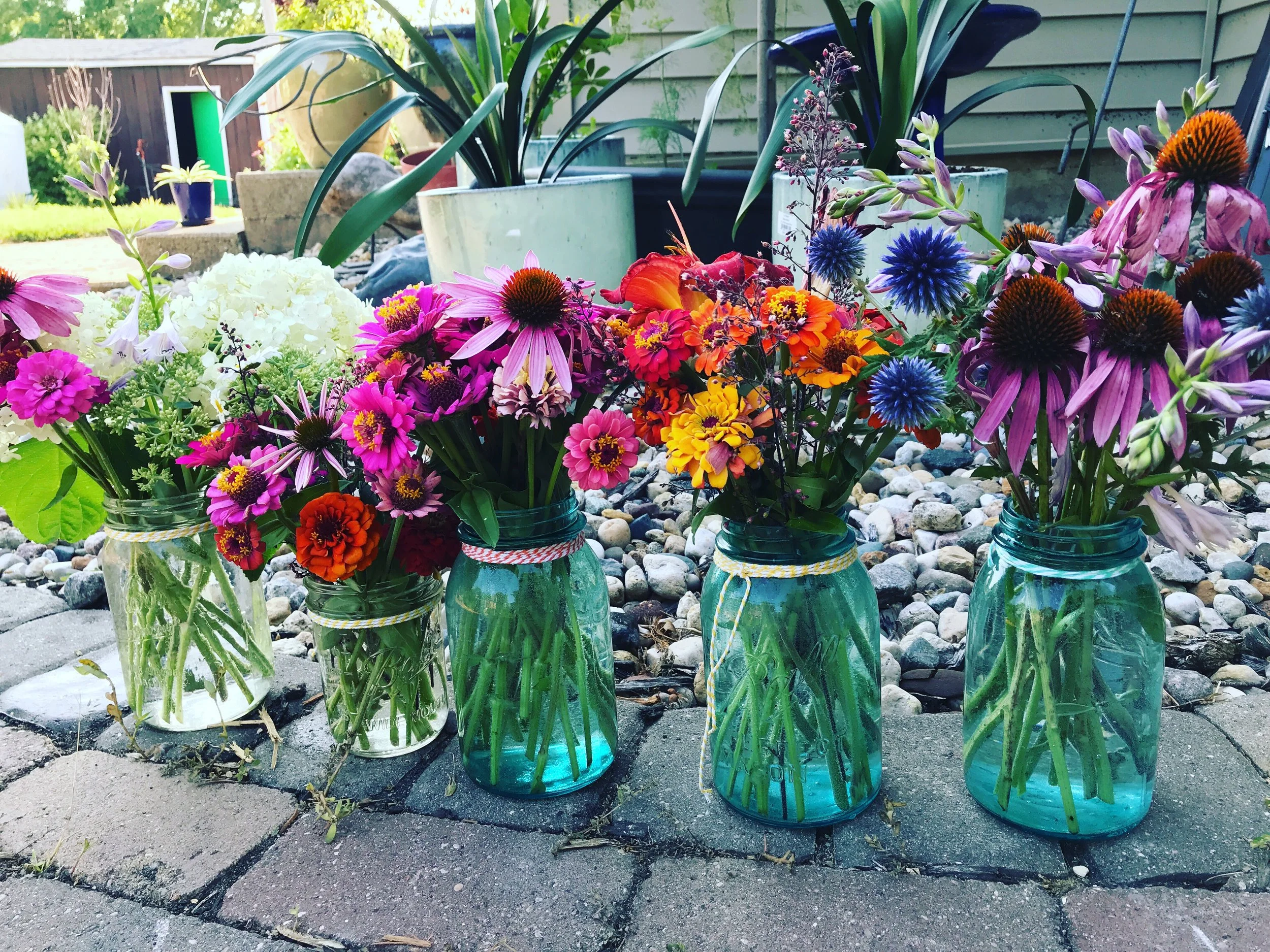A small fresh flower arrangement on the table adds beauty and delight to your home, and does not have to be hard.
All flowers are beautiful.
I have never seen a “bad” arrangement. Any one, any age can do it. However, following a few simple artistic design principles will improve the final design.
Here are some ideas and tips you might try:
1. Do you pick your vase first or pick your flowers first? If you have a vase you want to use, start with that. But, in general, I find it easier to pick my flowers first. Then I have a better idea what color and size vase to use.
I like to choose a vase totally opposite in color to the flowers (for example – for white hydrangeas, pick a purple vase) OR match a color in the flowers to the vase (for example – for cone flowers pick a golden brown vase to match the golden seed heads of the flowers). When in doubt, a green or clear vase usually works well. A wide mouthed vase obviously takes a lot more flowers than a narrow mouthed vase. I find wide mouthed vases harder to arrange unless you have large flowers like peonies or lilacs.
2. Pick the main larger flowers you want in the arrangement first. Some good choices that hold up well include tulips, daffodils, peonies, iris, lilacs, mockorange, roses, hydrangeas, phlox, cone flowers, sedums, daisies, black-eyed susans, etc. (Daylilies and hibiscus do not hold up well.) Cut flowers to the appropriate length. Usually they look best if they are cut to about ½ to 2/3rds as tall as the vase. (For example - towering tall flowers in a short vase look like they will topple over – and often do!).
3. Arrangements do not have to be large. Some of my favorite fresh arrangements are tiny ones that use lily of the valley, brunnera blooms, astilbes, or zinnias.
4. After choosing your primary flowers, pick smaller filler flowers with complementary colors to add to the arrangement. Some of these filler flowers might be daisies, zinnias, astibles, mums, asters, hosta flowers, etc. Cut these filler flowers to about 2/3 length of the other flowers you picked. Place around the taller flowers.
5. Add filler greens to complete the arrangement. Some of my favorite fillers are baptisia leaves, astilbe leaves, small fern leaves, Russian sage, and hosta or brunnera leaves.
6. Finish the arrangement by tying a ribbon or string around the vase if desired. Add water.
Making Fresh Arrangements with “Wet Foam”
1. If you have a low container for your arrangement you will want to use wet foam for placing the flowers. Using a sharp knife, cut the foam to the size of the container and about the height of the container or slightly higher.
2. Arrange the stems of your primary flowers in the foam. Often the “rule of 3” is a good one to follow. Typically 3 of something looks more artistic than 2 of something. Or an odd number usually is more pleasing than an even number. Fill in around the primary plants with other flowers and greenery, cutting those flowers to about 2/3 the length of the primary flowers.
3. Use filler leaves, such as hostas, around the outside edge of the container to cover the foam. Small sprigs of evergreen might also be used as a filler. Moss or beads may also be used to cover the foam.
4. Adding a bow or ribbon also enhances the final look.
5. Water the arrangement. Keep wet foam moist to make the arrangement last longer.



